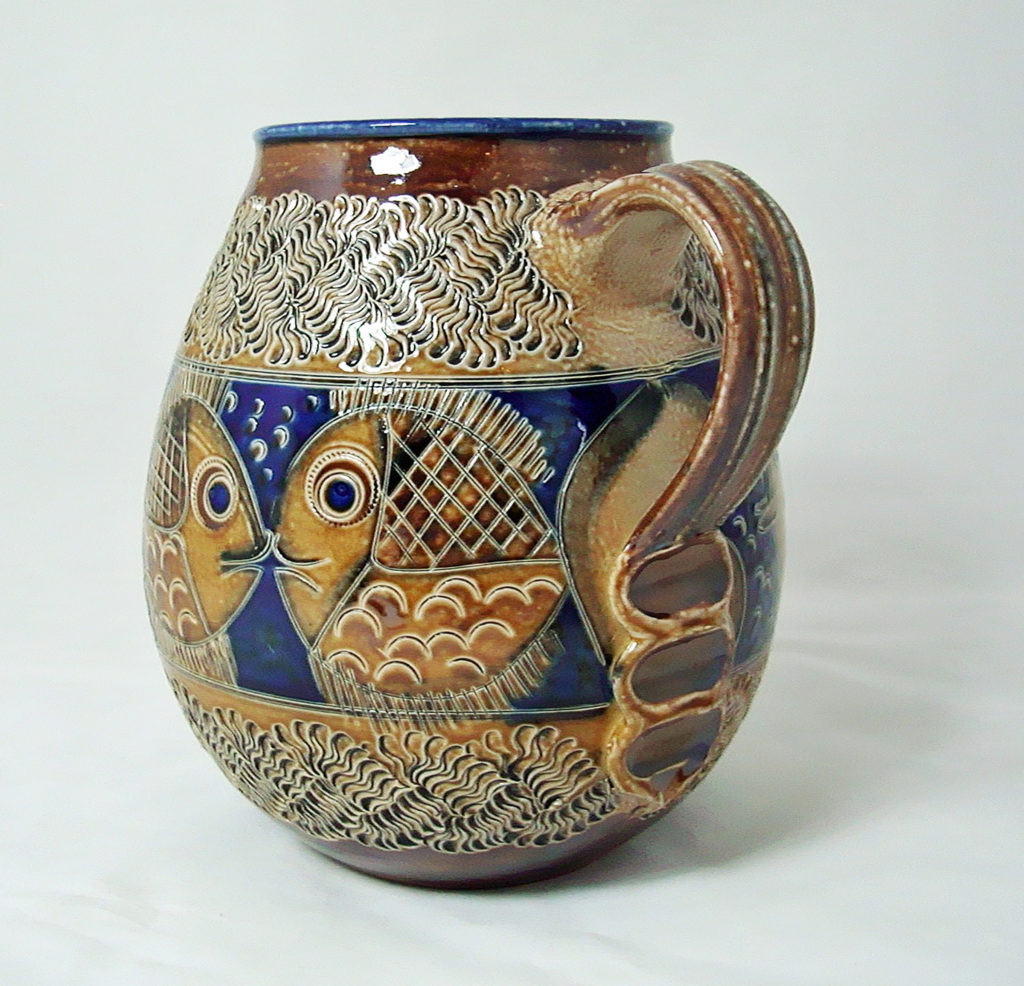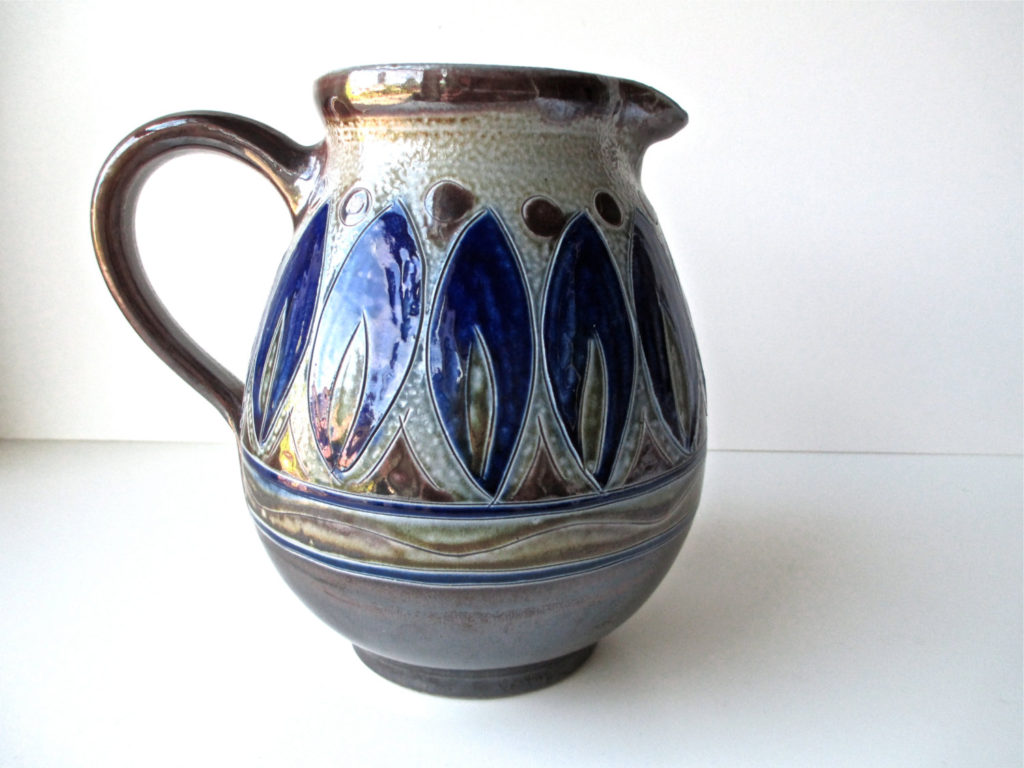Is salt-glaze stoneware the new craze in ceramics
Antiques writer Duncan Phillips explores the growing demand for salt-glazed stoneware pottery from Germany and wonders if it will be the next ceramics craze
Every so often a new craze comes along to grip collectors. Usually, it’s the younger generation that get hooked, perhaps because their pockets are smaller and things more affordable, or perhaps the subject has been overlooked by older generations.
In the past thirty years, the ceramics world has watched all kinds of pieces rise to the fore: Fairings, Staffordshire figures, Clarice Cliff, Shelley, Charlotte Rhead, Moorcroft, character jugs, Martinware and many others. So what’s next?
The next big thing – salt-glazed stoneware

I raise a hand for German 20th century salt-glazed stoneware pottery. No, not the German art pottery known as ‘Fat Lava’ – those chunky pieces with thick, deeply coloured encrusted glazes so easy to spot in antiques centres, beloved by some, but not particularly fine in their creation and currently in over supply.
This kind of stoneware pottery is much more difficult to find, which makes it even more appealing to people like me, but it also has a much greater esoteric appeal, much in common with the work of Bernard Leech and other studio potters.
The story of salt-glazed stoneware
Salt-glazed stoneware is thought to have its origins in the work of Dutch potters who used the wood from old barrels discarded by herring fishers to fire their kilns and then discovered their unglazed pots emerged covered by a glass-like shine.
The history books, meanwhile, recount that it was 15th century Rhineland potters who found that the technique produced an orange peel-like translucent coating.
Hot reaction

According to the science books, at an extremely high temperature the salt reacts with the silica in the clay pots to produce sodium silicate. This combination of heat and chemical process causes the salt to vaporise and bond with the pots to give an extremely strong finish, impervious to fluids, even acid. The process meant that no two pots emerged the same.
Salt-glaze in the UK
The technique spread to the UK in the 17th century, notably at John Dwight’s Fulham pottery, and in the 1840s, John Doulton made his fortune perfecting more uniform production of salt-glazed sewer pipes and other utilitarian wares at his factory in Lambeth.
Doulton used the process to produce decorative wares for a brief period, designed and produced notably by the famous George Tinworth (1843-1913) and sisters Hannah (1851 -1916) and Florence Barlow (1855-1909). Their pieces have been collected for many years, as the interest in the Decorative Arts has risen so dramatically.
Bernard Leach and salt-glaze
This type of work was picked up by studio potters such as Bernard Leach (1887-1979) and his followers working in St Ives.
The Rhineland area of Germany provided the most essential ingredient to the development of the ceramic industry: the purest clay quarries in Europe and massive forests and basalt mines made the area ideal for pottery production.
The First World War took a heavy toll on the number of potters in Westerwald, but several small workshops survived and developed into major manufacturers.
The grandmother of German Modernist ceramics

Elfriede Balzar-Kopp (1904-1983) and Wim Mühlendyk (1905-1986) were founders of potter families whose aim was to revive the traditional methods of production. Efriede, known as the “grandmother of German Modernist ceramics”, was born in Luxembourg and studied at both the state engineering and ceramic college in Höhr-Grenzhausen and at the state majolica factory in Karlsruhe, where she later worked.
She opened her own studio in 1927 and was active as a potter until 1973. Associated with the move away from German expressionism, which had abandoned tradition, she instead
supported a philosophy of new objectivity, whose art the Nazis later condemned as degenerate. Her collaborator, Mühlendyck was born in Porz, near Cologne. He attended the State Ceramic Technical College in Höhr-Grenzhausen in 1926–27 and founded a workshop there in 1931. Regarded as an innovator among his peers, in addition to drinking vessels, he also produced tiles and, somewhat unusually, ceramic tombstones. Between them, they built new furnace-kilns and experimented with firing temperatures and production methods.
Their work won medals in the World exhibition in Paris in 1937. Klothilde Giefer-Bahn (1924-2008) was apprenticed to Elfriede Balzar-Kopp. She was born in Koblenz and completed her Masters training as a ceramicist in 1947, the same year that she opened her own studio.
She exhibited widely and won many awards, while her work is in museums and private collections around the world. Her son Roland continues the pottery today.
John Newton Antiques

Less familiar to UK collectors is German salt-glazed studio pottery now being pioneered by east Yorkshire based dealer John Newton who will be exhibiting at the NEC’s Antiques for Everyone fair, from 20–23 July
John has enjoyed many years specialising in traditional English and European porcelain but now he concentrates particularly on a type of salt-glazed studio pottery with its distinctive colours of grey and cobalt blue that takes its name from the Höhr-Grenzhausen and Ransbach-Baumbach area known as Westerwald, about half-way between Frankfurt and Cologne, in Rheinland-Pfalz.
With prices slowly rising, and a general dearth of good pieces, now must be a good time to buy. Not only that, the pieces will have a great appeal, somewhere between Moorcroft and Leach.
John has built a significant following of buyers for a collecting area that has never been promoted or widely recognised in the UK. Prices go from the low hundreds for smaller items. Almost all the pieces he sells are by known and recorded studio potters, which makes it easily identifiable and therefore more attractive for today’s collectors who value a strong and appealing back story.
Antiques for Everyone is at the NEC, Birmingham, July 20 to 23.
